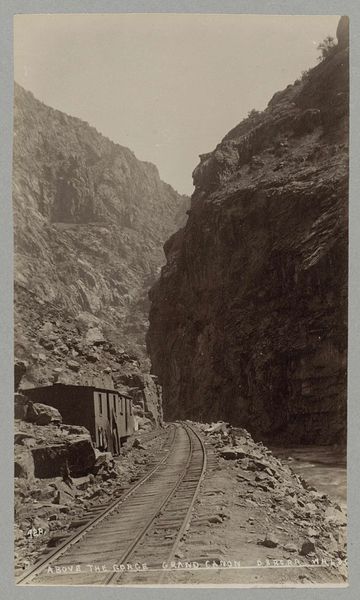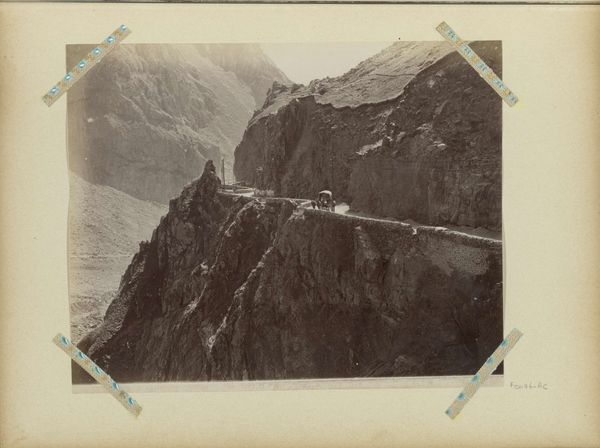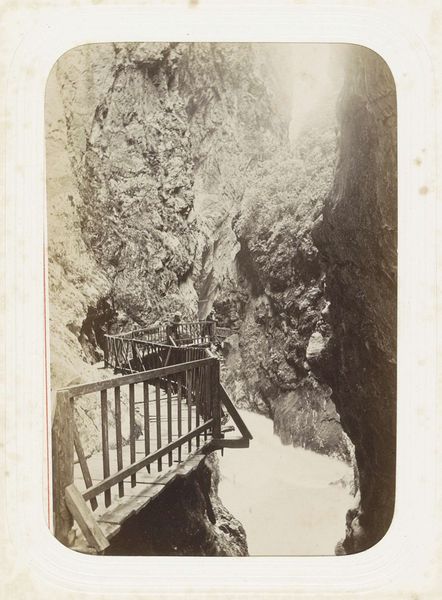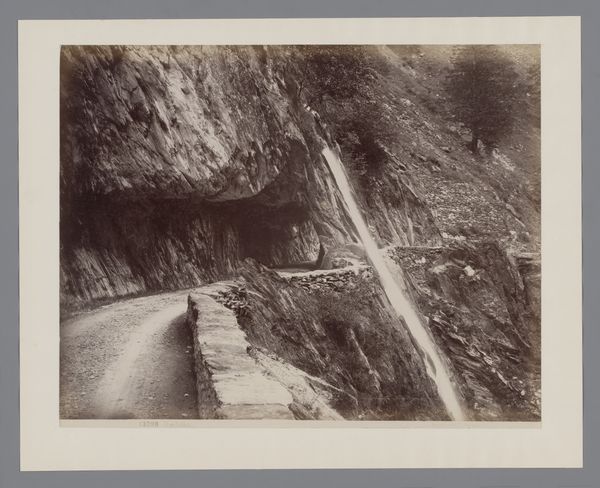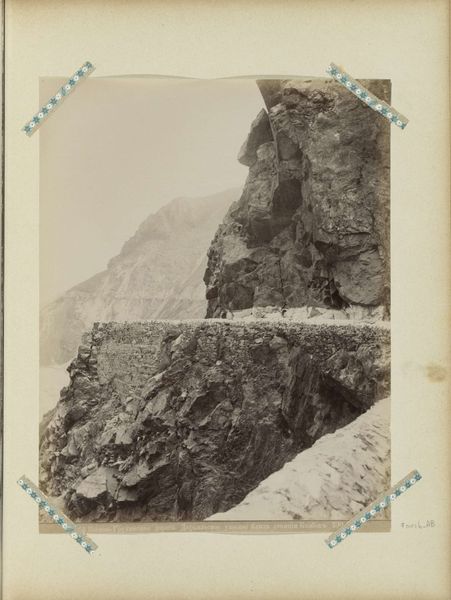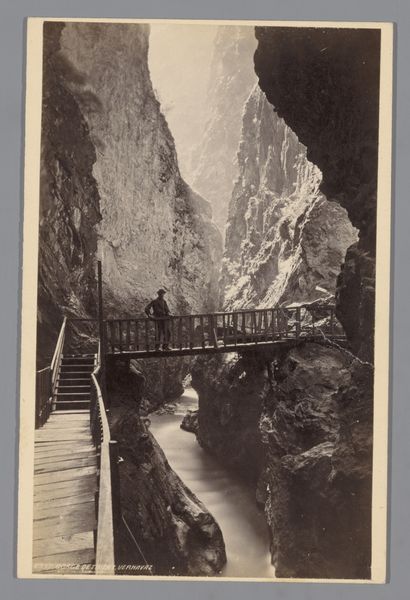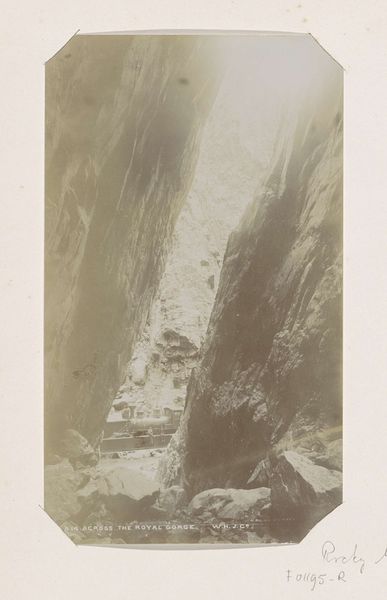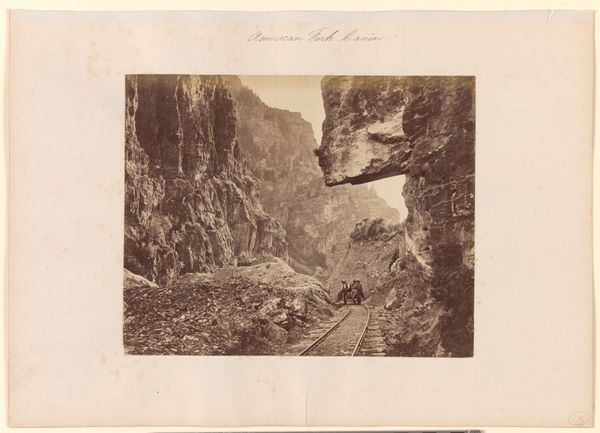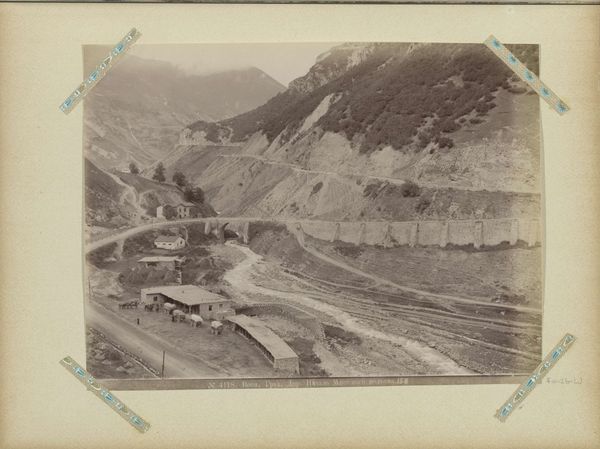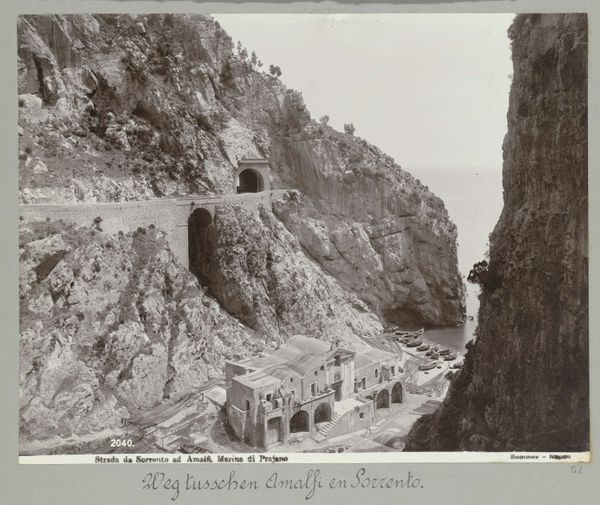
Dimensions: height 184 mm, width 108 mm
Copyright: Rijks Museum: Open Domain
Curator: William Henry Jackson's gelatin silver print, "Spoorbrug door de Royal Gorge bij Cañon City," taken sometime between 1860 and 1900, captures a stark juxtaposition between the industrial and the natural. Editor: Immediately, I get this feeling of… vertigo? The bridge seems so small against those towering, craggy cliffs. Like a tiny metal thread woven into the earth's raw fabric. Curator: Exactly. The photograph presents the railway not merely as a functional structure but as a manifestation of industrial expansion’s impact on the American West. Think of the labor involved: the extraction of materials, the bridge construction. And it also implicates consumption – access afforded, places connected. Editor: And the Hudson River School influence! You feel the vastness, that romantic awe of landscape. It makes me wonder about the perspective of those early travelers, chugging along that thin line of metal into the unknown. The vulnerability of the human endeavor set against geological time. Curator: Precisely! Notice the photographic technique itself. The albumen and gelatin silver printing process enabled sharp details – which show the bridge's manufactured aspects. Consider also how the camera angle emphasizes the gorge's depth, heightening the feeling of industrial intervention. Editor: The monochromatic palette almost flattens the image, which emphasizes the stark forms: bridge girders meeting rock faces. It's a story about control versus surrender. About humans bending the world, but the world still has its silent presence. Curator: Yes, and the albumen and gelatin-silver printing process really speak to the industrial moment. Photography itself being industrialized. It mirrors that intersection of nature and manufacture. The final image, circulated, is a commercial product that romanticizes both the railway and the western landscape for prospective developers. Editor: So it is not so much an objective documentation of the bridge as an orchestrated image of industry dominating a mythologized American landscape? As a kind of metaphor for Manifest Destiny? It reminds me, funnily enough, of a Piranesi etching: the grandiosity of infrastructure looming over the observer. Curator: Absolutely, the artwork operates on that level! In sum, thinking about the context of production as well as distribution and consumption, helps us consider it as an artwork rather than simply documentary evidence. Editor: Ultimately, that tension between fragility and imposing presence is really compelling, especially as we reconsider it today. A tiny, powerful moment frozen in time, reminding us about impact and change.
Comments
No comments
Be the first to comment and join the conversation on the ultimate creative platform.
